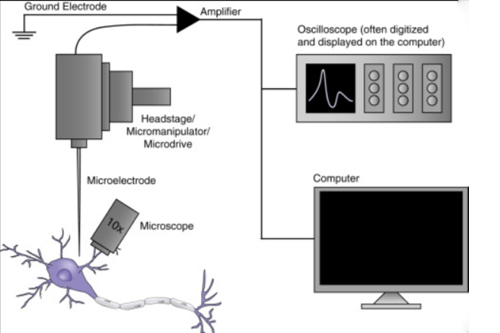
Electrophysiology
Electrophysiology In Nagpur (EP study) is an in-depth study into the intricate electrical activity of your heart. In cardiology, electrophysiology (EP) investigates these electrical impulses in the diagnosis and treatment of irregular heart rhythms, or arrhythmias.
Using cardiac catheters, tiny tubes, and sophisticated computer systems, your doctor can generate electrocardiogram, or EKG, tracings and electrical measurements from within your heart. These measurements come from sensors implanted inside of your heart and therefore give information that cannot be obtained from electrodes placed outside of your chest.
By looking at your heart’s electrical activity, your practitioner can determine what is out of the ordinary and exactly where and why distortions in your heartbeat messages occur. Normally, these messages control your heart’s contractions in a well-choreographed ballet.
When an abnormal heart rhythm appears, it is similar to a bus going off its customary route. The bus might begin to start from an unexpected stop, skip some important stops along its route, or may even not reach its destination. Similarly, irregular signals within the heart can mess up its rhythm and start beating either very fast, very slow, or erratically too. Only after the root cause of these abnormalities has been identified can it be assessed whether the rhythm poses any potential risk to the patient and also be treated appropriately.
How does the test work?
Pre-procedure preparation before an electrophysiology study includes a few steps that ensure your safety and comfort through the examination process:
Make arrangements to have someone drive you to the hospital and take you home since you will not be able to drive for at least 24 hours after the procedure;
Discuss any questions or concerns regarding the procedure with your healthcare provider beforehand;
Inform your provider of a latex allergy or another issue with anesthesia; and
Wear comfortable clothing when having the procedure and refrain from wearing makeup and nail polish.
Leave good jewels and valuable things at home but please bring glasses or a hearing aid if you need to.
About medications and preparations for diet:
See your doctor and give him an exhaustive list of all prescription drugs, supplements, and herbs.
Bring to the operating room with you a one-day supply of prescription drugs and take them as directed by your physician as for when to take which drug.
Your doctor will guide you about what drugs you should continue taking and which to stop.
Discuss changes in your diabetes medications with your health care provider.
Eat a regular dinner the night before the test.
Nothing by mouth, including water, gum, or other candy, for at least 12 hours before the test. This means you shouldn’t chew gum or have mints, and you shouldn’t swallow water when brushing your teeth.
Take all of your medications with only minimal amounts of water.
Key Concepts in Electrophysiology:
- Resting Membrane Potential:
The potential difference across the membrane of resting neuron is usually about -70 mV. It is maintained by the distribution of ions like sodium, potassium, chloride, and calcium across the cell membrane. - Action Potential:
Depolarization: Rapid, temporary change in the membrane potential of a neuron upon stimulation. It involves both depolarization (influx of sodium ions) and subsequent repolarization (efflux of potassium ions) to enable signal passage along the axon. - Synaptic Transmission:
Process that describes how neurons communicate with each other through synapses. This is done through neurotransmitter release that will bind to the receptors of the postsynaptic neuron and create changes in its membrane potential - Electrophysiological Techniques:
Different methods have been developed to measure electrical activity in neurons and other tissue. They include:
Intracellular Recording- a microelectrode is inserted into the cell to measure membrane potential and action potentials.
Extracellular Recording- This is basically done by placing electrodes near a neuron since it measures the electrical activity of many cells.
Patch Clamp Technique-this one has enabled scientists to study ion channels in isolated cell membranes or in whole cells - Electroencephalography (EEG)-
A non-invasive procedure used to record electrical activity in the brain using electrodes on the scalp. It is, indeed one of the useful diagnostic techniques for epilepsy, sleep disorders or head injuries. - Electromyography (EMG):
A diagnostic technique used in evaluating the electrical activity of skeletal muscles. The EMG test helps diagnose neuromuscular conditions and muscle diseases and nerve injuries. - Nerve Conduction Studies (NCS):
Assess velocity and amplitude of electrical impulses conducted down peripheral nerves, which can be a diagnostic tool in cases such as carpal tunnel syndrome and peripheral neuropathy.
Clinical Applications of Electrophysiology:
- Diagnosis of Neurological Disorders:
- Electrophysiological tests help diagnose conditions like epilepsy, multiple sclerosis, and neuropathies by assessing electrical activity in the brain and nerves.
- Cardiac Electrophysiology:
- In cardiology, electrophysiology studies the electrical activity of the heart. It helps in diagnosing arrhythmias and can guide treatment decisions, such as catheter ablation for atrial fibrillation.
- Research:
- Electrophysiology is crucial in neuroscience research for understanding the mechanisms of synaptic transmission, neuroplasticity, and the impact of various drugs on neuronal activity.
- Monitoring:
- Continuous EEG monitoring in critically ill patients can help detect seizures and assess brain function.
What are the benefits of an electrophysiology test?
An EP study can provide you with insight into the nature of your heart rhythm irregularity, bringing all your queries and questions to an end.
In contrast, catheter ablation can potentially obviate the need for specific medications if it solves the problem.
General and daily functioning have been improved.
Provide a less expensive alternative to surgical options for the treatment of arrhythmias through catheter ablation.
At our Neurosys Multispeciality Center, we perform several key procedures including Craniotomy, which is primarily for the excision of brain tumors; V-P Shunt Surgery for treating hydrocephalus; surgeries for epilepsy; and operations targeting brain stem glioma. Beyond these, we offer a range of other neurosurgical services. If you have any questions that are not answere, please contact us through our Contact Us or Book your Appointment.
